
A new revenue set of stamps was issued in 1880 although many catalogues give the date as 1882 as that was when they could first be used postally.
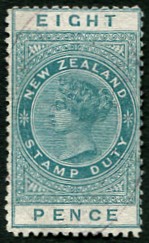
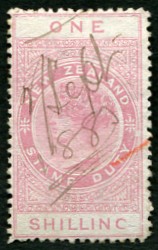
The dies were engraved by W.R.Bock and the design remained unchanged for 51 years, not quite what we are used to these days! It was 1931 when they were replaced by the Arms design.
The first printings included the low values of 4d, 6d, 8d and 1/- while from 1882 the lowest denomination was 2/-.
The first issue was watermarked NZ, but from 1882 the watermark was NZ and star and from 1903 the watermark was sideways.
The designs are similar although the frame to the Queen's head varies in shape with the frames being similar to those of the first side-face issue. The frame of the low values was an oval similar to the 1874 1d postage stamp.
Up to 10/- the head was in a circular frame similar to the 1874 2d.
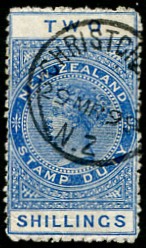
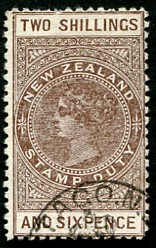
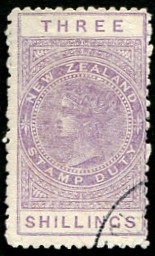
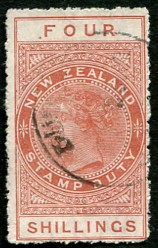
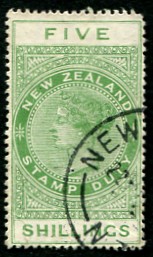
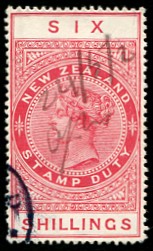
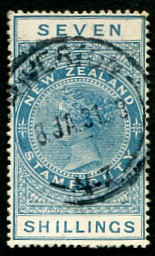
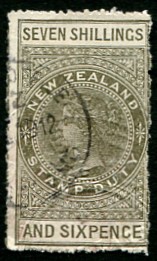
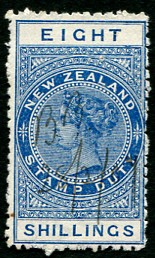
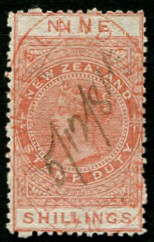
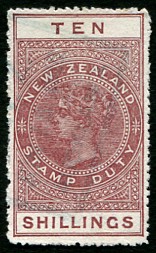
Circular frame to head
From 15/- to £2, the frame was circular, but the inscription was in two parts similar to the 1874 3d. As can be seen from the scans, revenue stamps often had holes punched in them to ensure that they could not be re-used.
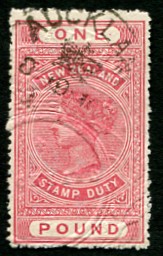
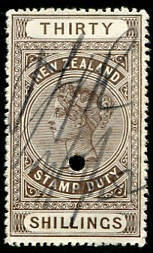
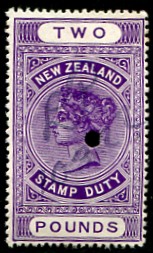
Frame split in two
From £2/10/- to £5, the head was in a rectangular frame similar to the 1874 4d.
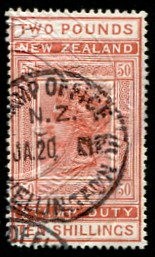
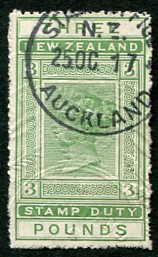
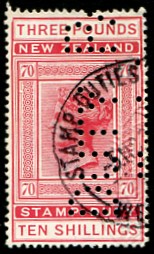
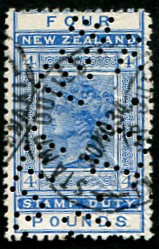
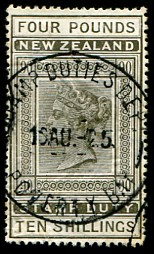
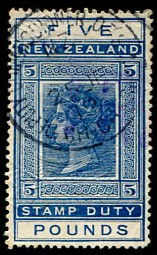
Rectangular frame
For the £6 to £10 pound values, the frame was a circle within a hexagon similar to the 1874 6d.
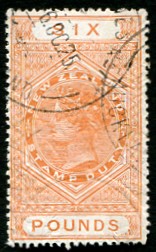
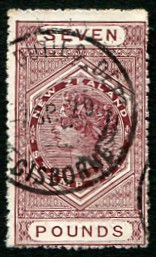
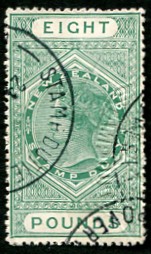
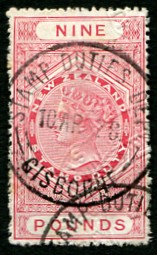
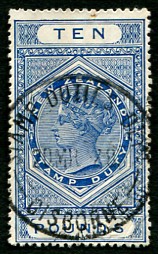
Hexagonal frame
For the 12/6 value and for values above £10, the frame was oval similar to the 1874 one shilling.
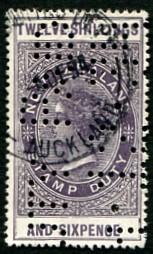
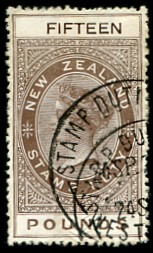
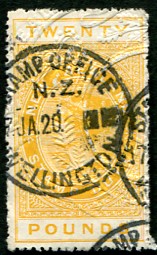
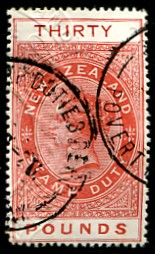
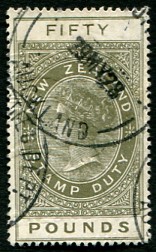
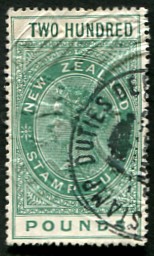
Oval frame
The 12/6 value, introduced in 1913, was the only additional value after the initial issue. It is very highly catalogued (higher than any other value) in mint and postally used condition. The above example is a perfin with the perforations showing DUTY PAID and the date 4 12 34.
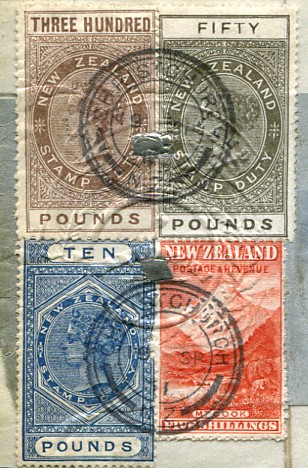
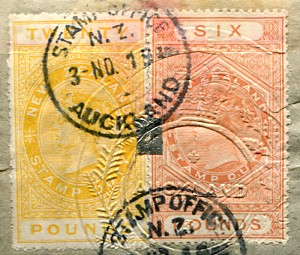
Metal foil ties
The revenue stamps were often used on legal documents and joined by metal foil ties. This is shown in the examples.
In one, a twenty pound and a six pound stamp are tied together with a metal foil while in the other there are 4 stamps: £300, £50, £10 and a QV pictorial 5/-.
Papers
The papers are the same as for the postage issues with the changes occurring at the same time. From 1913 the stamps were on chalk surfaced paper and the colours are brighter. However, the basic colour of all values remained the same during the 51 years.
The above information is taken from The Postage Stamps of New Zealand Vol 6, published by the Royal Philatelic Society of New Zealand in 1977. All scans were made by the author.